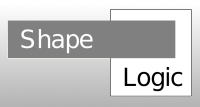
This page is about how the code is organized. This is work in progress and only interesting for programmers looking at the code.
The main organization issues are:
The overall idea is to try to simplest solutions first, and go to a better or harder solution later.
Traditionally Java has a lot of classes and packages in their own directory, where C++ have fewer. It is a goal to keep the structure of the Java and C++ version of ShapeLogic as close. The first version will use the same directory structure as Java did.
Code can be browsed at:
Google C++ Testing Framework is a framework for writing C++ unit tests. Based on the xUnit architecture. It has a strong focus on simplicity and terse code.
To begin with there is only one directory for all the unit tests: shapelogic-cpp/src/test/cpp/
You can run them from command line using Bjam. Either from the test dir or from shapelogic-cpp/
If you are using Eclipse as an IDE then you change the main() function call the tests, by changing a flag and un-commenting the test code there.
Here are 2 methods for how to compile and link the code one used when the application is build with Eclipse and one when it it build with Bjam: